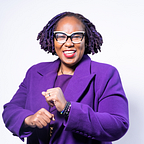Blurred Lines: How Social Media Impacts the Classroom
For the past couple of days, we have seen headlines regarding children getting hurt at school in the Tampa Bay Area. There are serious concerns with our school district and this can no longer be swept under the rug. Our children are being arrested for fighting because the school district hasn’t been consistent with applying discipline policies and providing real resources that will impact our children. This is not conjecture, the proof is on social media.
The community must pay attention to school board workshops and meetings. The community can hold the elected officials accountable as to what is said and how the monies are allocated. The district has a long history of institutionalized negligence and has been robbing communities generation after generation. For example, last year, the school board spent hours talking about their feelings due to the change in contract from Office Depot to Staples. But there are children who cannot read. In Hillsborough County, 73% of the 3rd-grade students are not proficient in reading. If this does not sound the alarm for you, I’m not sure what will!
I often share student stories and this one seems to underscore some of the deep-rooted issues in education.
“The bus is late every day so I don’t have time to communicate with my friends in the morning. Do some research on Instagram and watch the number of bus fights we have. I’m not sure how the bus driver can handle all of this every morning. I arrive at school and I’m rushed to eat breakfast in the morning because I’ve missed 15–30 minutes of my 1st-period class.
It’s hard to focus in this class because I’m already so far behind. I’ve missed every bellwork assignment because the bus can’t get me to school on time. It’s getting extremely hot in this classroom. I can’t concentrate with this and I’m now getting agitated. My phone is going off in class with a Snapchat message from my friend. She said this girl on campus wants to fight me. This is the same girl I told my principal about last week. I know that if I report my problems at school, they won’t protect me. They didn’t even make time to really talk to us. I don’t think my principal really cares.
I have to protect myself because she is making threats to hurt me and no one is helping me. It’s hard to talk to my parents because they are either busy with work or on the phone. We don’t even spend quality time with each other anymore and I keep myself company by being on my phone. Although the kids bully me online, I try not to allow that to bring me down. I try to focus on the positive but it’s wearing me down.”
If you are reading this, this could be your child. We can no longer ignore the cries for help in our children and blame shift. So what are some solutions? Well I’m glad you asked.
Solution 1: Increase teacher pay and advocate for the advancement of policies to better support the issues happening in the classroom. To figure out the problem, this requires district leaders to be in the classroom. Not hiring consultants for $500,000 using taxpayers’ money. That money can be better allocated to actual in-classroom educators.
Solution 2: Have licensed mental health counselors that are relatable to our children, in every school. We must address the trauma in our schools and provide conflict resolution resources. According to the ACLU report, Hillsborough County has the lowest student to school psychologist ratio in the state. Based on the 2017–2018 data, 139 schools did not have a school psychologist.
Solution 3: Have meditation rooms and/or spaces that allow children to reset. Our children need a safe space. Additionally, in many Hillsborough County Schools, the central a/c units are not working. How is this a productive environment for our children to thrive? Recently, students have partnered together to purchase fans for their schools. STUDENTS. Not the district. This is how your tax dollars are working. We need safe spaces that are conducive to learning.
Solution 4: Encourage social media influencers to create campaigns to address violence in schools. These campaigns need to come from the student’s favorite music stars, YouTubers, and people that have captured our children’s attention. We have six years old singing, “I have murder on my mind.” The narrative has to shift and influencers should be held accountable for the content they share.
Solution 5: Create a task force dedicated to observing social media. Social media is used by our children to bully and continue trauma, well after the school day has ended. Students use social media to perpetuate bullying and it often goes unchecked. School districts should release a statement that they take safety seriously, not only in school, but on social media as well.
Solution 6: Require implicit bias and diversion training for resource officers on campus. Based on the 2017–2018 data, Hillsborough County Public Schools has the highest number of students arrested, in the state. Additionally, Hillsborough County leads the state with the highest number of students cited by police. Our district seems to use the police to fill in the gaps for inadequate plans to address issues on school campuses, particularly social media issues.
Solution 7: Educate parents to be aware of the dangers social media has on children and how it influences them in the classroom and outside the classroom. Parents must be engaged with their children and intentional with them. The social media culture is what our children are moved by. Social media has taught our children to place more value on likes and clout rather human life. This is why students stand around and record fights because social media provides an instant reward (i.e. going viral) but not for protecting their fellow students.
